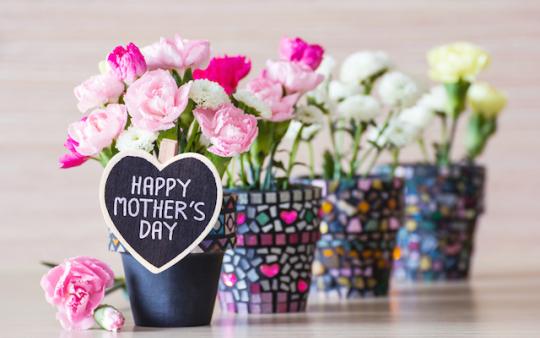Whether this Mother’s Day is going to be your first Mother’s Day or your twenty-first, congratulations! You are definitely worth celebrating!
No doubt you’re familiar with the concept of Mother’s Day. You’ve probably made or bought your own I-love-mom cards, gifts, and made or eaten lovely Mother's Day treats. Today, in honour of your first or twenty-first Mother’s Day let's discuss the origins of the international celebration of mommies.
How It Started
While communities have been celebrating motherhood in some form or another for centuries, Mother’s Day as we know it today in North America was the brainchild of Ms. Anna Jarvis in 1908. In fact, prior to 1908, Ms. Jarvis’ mother Ann organized “Mothers’ Friendship Day”, which was intended to help reconcile Union and Confederate soldiers after the American Civil War.
When Ms. Jarvis the younger wanted to honour mothers for the sacrifices they make for their children, she conceived Mother’s Day. By securing financial support from John Wanamaker, a department store owner in Philadelphia, Jarvis was able to launch the first Mother’s Day celebration at a Methodist church in Grafton, West Virginia while Wanamaker simultaneously hosted an event at one of his stores.
Buoyed by the success of the first events, Jarvis dreamed of having her special day added to the national calendar. At the time, most American holidays were geared specifically toward men and male achievements and Jarvis saw that she would need a grassroots campaign. She began to write letters. Her letters went to newspapers and politicians and urged them to promote motherhood as an annual event.
In 1914, six years after the first celebrations in Philadelphia and Grafton, then-president Woodrow Wilson signed a measure officially marking the second Sunday in May as Mother’s Day.
Change of Heart
By 1920 Jarvis, who remained unmarried and without children, had grown disillusioned with what Mother’s Day had become. To her mind, the commercialization and materialism of Mother’s Day was a corruption of what she had intended. Publicly, she denounced Mother’s Day and urged people to stop buying flowers, cards and gifts. She even went so far as to resume her letter writing campaign, although this time around she was protesting the Mother’s Day profiteers. She began to file lawsuits against the companies using the term “Mother’s Day” and at the time of her death in 1948, Jarvis was actively lobbying the US government to remove the day from the national calendar.
Current Day Mother’s Day
Today in the United States, people spend over 20 billion dollars each year on Mother’s Day buying jewelry, gifts, flowers, chocolates and cards. 2017 saw people spending an average of $186 per person and almost half give gifts of experience with most of that group in the 18 to 34-year-old range.
The original intention behind Mother's Day was to honour the women in our lives for their hard work, love and sacrifices. Perhaps this year, instead of spending your money on flowers and cards, you might consider honouring Anna Jarvis along with the new mom in your life by donating that money to a women’s organization such as a postpartum support group or perhaps to a food bank to help another family in need. Alternatively, instead of spending any money at all, you might instead come up a new plan: spending time together and doing something you love. By creating your very own Mother’s Day traditions, you will create memories that you will cherish forever.









